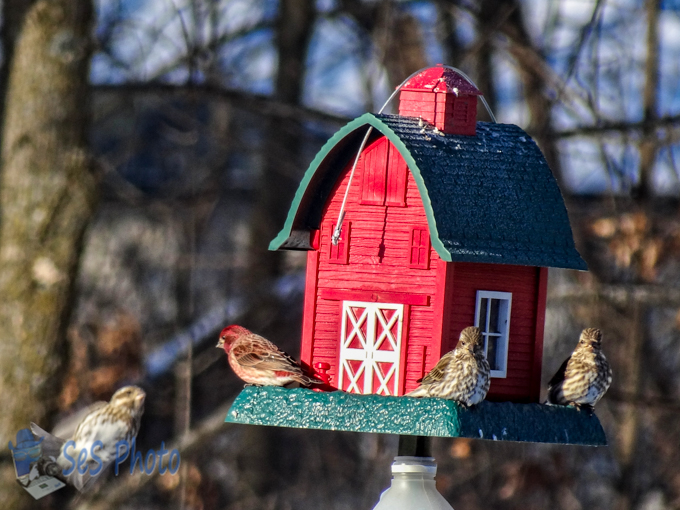As the snow began to fall, something larger swooped down near my head before flying up to a large pine tree. This juvenile bald eagle’s head wasn’t as white as the snow yet as some brown still shows on its head. Bald Eagles take about five and a half years to mature to the typical white head and tail and solidly dark chocolate brown body, legs and wing feathers of an adult. Immature Bald Eagles can spend the first four years of their lives exploring of vast territories and can fly hundreds of miles per day.
Juvenile Bald Eagle











